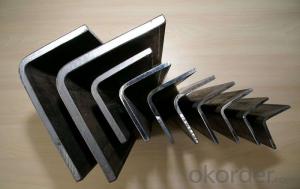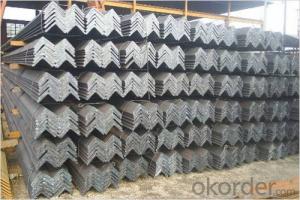GB Equal Unequal Angle Steel, Stainless Steel Angle, Steel Angle Iron Weights
- Loading Port:
- Tianjin
- Payment Terms:
- TT or LC
- Min Order Qty:
- 27 m.t.
- Supply Capability:
- 24000 m.t./month
OKorder Service Pledge
Quality Product, Order Online Tracking, Timely Delivery
OKorder Financial Service
Credit Rating, Credit Services, Credit Purchasing
You Might Also Like
Product Specifications of GB Equal Unequal Angle Steel, Stainless Steel Angle, Steel Angle Iron Weights
GB unequal angle steel
unequal angle steel
material:Q235 Q345
size: 20*3-200*24 or 25*16-200*125(mm)
stainless unequal angle
Detail Information of GB Equal Unequal Angle Steel, Stainless Steel Angle, Steel Angle Iron Weights
1)Tolerance: +/-5% (thickness,length,weight)
2)Certification: Mill Certification
3)Price term: FOB or CFR according to clients requirements
4))Use:shipbuilding,steel tower,construction,electric utility industry
A:Unequal angle bars:25*16*3--200*125*18(mm)
B:Equal angle bars
| Equal angle steel | |||||||
| Size | Width (mm | Thicknessmm) | Density (kg/m) | Size | Width (mm | Thicknessmm) | Density (kg/m) |
| 20 | 20 | 3 | 0.889 | 80 | 80 | 7 | 8.525 |
| 20 | 20 | 4 | 1.145 | 80 | 80 | 8 | 9.658 |
| 25 | 25 | 3 | 1.124 | 80 | 80 | 10 | 11.874 |
| 25 | 25 | 4 | 1.459 | 90 | 90 | 6 | 8.35 |
| 30 | 30 | 3 | 1.373 | 90 | 90 | 7 | 9.656 |
| 30 | 30 | 4 | 1.786 | 90 | 90 | 8 | 10.946 |
| 35 | 35 | 3 | 1.578 | 90 | 90 | 10 | 13.476 |
| 35 | 35 | 4 | 2.072 | 90 | 90 | 12 | 15.94 |
| 35 | 35 | 5 | 2.551 | 100 | 100 | 6 | 9.366 |
| 40 | 40 | 3 | 1.852 | 100 | 100 | 7 | 10.83 |
| 40 | 40 | 4 | 2.422 | 100 | 100 | 8 | 10.276 |
| 40 | 40 | 5 | 1.976 | 100 | 100 | 10 | 15.12 |
| 44 | 44 | 3 | 2.002 | 100 | 100 | 12 | 17.898 |
| 44 | 44 | 4 | 2.638 | 100 | 100 | 14 | 20.611 |
| 38 | 38 | 3 | 1.719 | 100 | 100 | 16 | 23.257 |
| 38 | 38 | 4 | 2.261 | 110 | 110 | 7 | 11.928 |
| 48 | 48 | 3 | 2.19 | 110 | 110 | 8 | 13.532 |
| 48 | 48 | 4 | 2.889 | 110 | 110 | 10 | 16.69 |
| 48 | 48 | 5 | 3.572 | 110 | 110 | 12 | 19.782 |
| 50 | 50 | 3 | 2.332 | 110 | 110 | 14 | 22.809 |
| 50 | 50 | 4 | 3.059 | 125 | 125 | 8 | 15.504 |
| 50 | 50 | 5 | 3.77 | 125 | 125 | 10 | 19.133 |
| 50 | 50 | 6 | 4.465 | 125 | 125 | 12 | 22.692 |
| 56 | 56 | 3 | 2.624 | 125 | 125 | 14 | 26.193 |
| 56 | 56 | 4 | 3.446 | 140 | 140 | 10 | 21.488 |
| 56 | 56 | 5 | 4.251 | 140 | 140 | 12 | 25.522 |
| 56 | 56 | 6 | 6.568 | 140 | 140 | 14 | 29.49 |
| 63 | 63 | 4 | 3.907 | 140 | 140 | 16 | 33.393 |
| 63 | 63 | 5 | 4.822 | 160 | 160 | 10 | 24.724 |
| 63 | 63 | 6 | 5.721 | 160 | 160 | 12 | 29.391 |
| 63 | 63 | 8 | 7.469 | 160 | 160 | 14 | 33.987 |
| 63 | 63 | 10 | 9.151 | 160 | 160 | 16 | 38.518 |
| 70 | 70 | 4 | 4.372 | 180 | 180 | 12 | 33.159 |
| 70 | 70 | 5 | 5.397 | 180 | 180 | 14 | 35.383 |
| 70 | 70 | 6 | 6.406 | 180 | 180 | 16 | 43.452 |
| 70 | 70 | 7 | 7.398 | 180 | 180 | 18 | 48.634 |
| 70 | 70 | 8 | 8.373 | 200 | 200 | 14 | 42.894 |
| 75 | 75 | 5 | 5.818 | 200 | 200 | 16 | 48.56 |
| 75 | 75 | 6 | 6.905 | 200 | 200 | 18 | 54.501 |
| 75 | 75 | 7 | 7.976 | 200 | 200 | 20 | 60.056 |
| 75 | 75 | 8 | 9.03 | 200 | 200 | 22 | 71.168 |
| 75 | 75 | 10 | 11.089 | Length=6-12meters SS400 or Q235 | |||
| 80 | 80 | 5 | 6.211 | ||||
| 80 | 80 | 6 | 7.376 | ||||
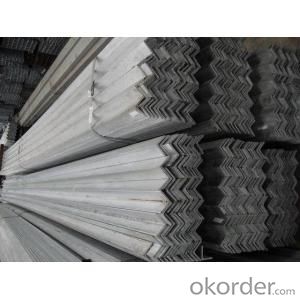
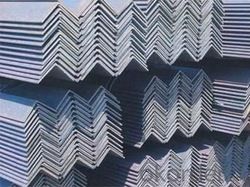
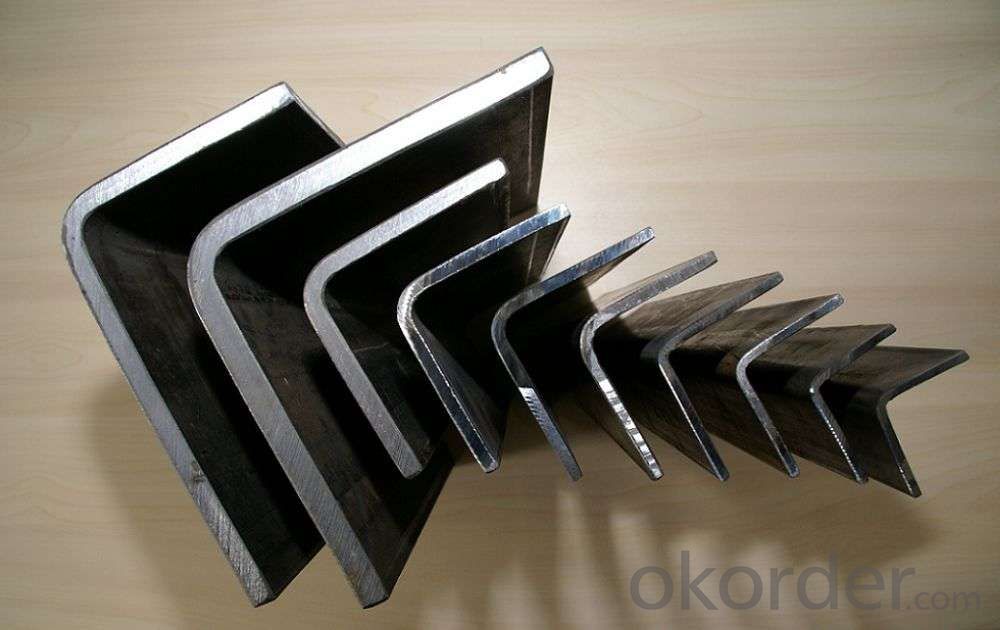
- Q:Can steel angles be painted or coated?
- Yes, steel angles can be painted or coated. Painting or coating steel angles helps to prevent corrosion and provides aesthetic appeal.
- Q:What are the different grades of steel used in manufacturing steel angles?
- There are several different grades of steel that are commonly used in manufacturing steel angles. These grades vary in terms of their composition, strength, and other properties, and are selected based on the specific requirements of the application. One commonly used grade is mild steel, also known as low carbon steel or A36 steel. This grade is widely available and commonly used due to its affordability and ease of machining. Mild steel angles are often used in general construction and fabrication projects. Another grade is high-strength low-alloy steel (HSLA), which contains small amounts of alloying elements such as copper, phosphorus, niobium, or vanadium. HSLA steels offer higher strength and improved corrosion resistance compared to mild steel, making them suitable for structural applications in heavy machinery or marine environments. There are also higher-strength steels, such as high-strength steel angles (HSS) or ultra-high-strength steel angles (UHSS). These grades are specifically designed to provide exceptional strength and durability, often used in demanding applications such as bridges, high-rise buildings, or automotive components. Stainless steel is another common grade used in manufacturing steel angles. With its excellent corrosion resistance, stainless steel angles are commonly used in food processing, chemical, or marine applications where resistance to rust and staining is crucial. The specific grade of steel used in manufacturing steel angles depends on factors such as load-bearing requirements, corrosion resistance, and cost considerations. Consulting with a structural engineer or steel supplier can help determine the most suitable grade for a particular application.
- Q:What are the considerations for selecting the appropriate steel angle finish?
- When selecting the appropriate steel angle finish, there are several considerations to keep in mind. Firstly, the intended use and environment of the steel angle should be considered. If the angle will be exposed to harsh weather conditions or corrosive substances, a finish with high resistance to corrosion, such as galvanized or stainless steel, would be suitable. Additionally, the aesthetic requirements of the project should be taken into account. Different finishes, such as powder coating or painted finishes, can provide a range of colors and textures to enhance the appearance of the steel angle. Finally, the budget and cost-effectiveness of the finish should be considered, as some finishes may be more expensive than others. Overall, it is important to select a steel angle finish that meets both the functional and aesthetic requirements of the project while being compatible with the intended environment.
- Q:What are the different load-carrying capacities for steel angles?
- The load-carrying capacities for steel angles vary depending on factors such as the size, shape, and material of the angle, as well as the specific application and installation method. It is recommended to consult engineering resources, industry standards, or a structural engineer for accurate load-carrying capacity information.
- Q:What is the standard length of a steel angle?
- The specific requirements and industry or project standards can lead to variations in the standard length of a steel angle. Typically, steel angles are readily accessible in standard lengths of 20 feet or 6 meters. These standard lengths facilitate transportation, handling, and installation. Nevertheless, it is worth mentioning that custom lengths can also be manufactured to fulfill project-specific requirements.
- Q:What are the common defects or issues found in steel angles?
- There are several common defects or issues that can be found in steel angles, which can affect their structural integrity and performance. Here are some of the most frequently encountered: 1. Surface imperfections: Steel angles may have surface defects such as scratches, pits, or uneven coating. While these may not significantly affect the strength of the angle, they can impact its visual appearance and corrosion resistance. 2. Warping: Warping refers to the distortion or bending of the steel angle along its length. This defect can occur during the manufacturing process or due to improper handling or storage. Warped angles may not fit properly in applications where precise dimensions are required. 3. Flaws in dimensions: Steel angles should be manufactured to specific dimensions and tolerances. However, defects like undersized or oversized legs, unequal leg lengths, or inconsistent thickness can occur. These flaws can lead to problems during installation or compromise the structural integrity of the angle. 4. Lack of straightness: Steel angles should be straight along their length to ensure proper alignment and load distribution. However, they can sometimes exhibit a lack of straightness, commonly known as bowing or crooking. This defect can make it challenging to align angles accurately and may result in uneven stress distribution. 5. Internal cracks: Cracks within the steel angle are a significant concern as they can compromise its strength and load-bearing capacity. These cracks can occur during manufacturing due to improper cooling or quenching processes, or they can be a result of excessive stress or corrosion. Internal cracks are often not visible to the naked eye, making it crucial to perform non-destructive testing methods like ultrasound or magnetic particle inspection. 6. Corrosion: Steel angles are susceptible to corrosion, especially in environments with high humidity, moisture, or exposure to chemicals. Corrosion can weaken the structure and affect the angle's overall performance. Regular maintenance and proper coating or protective measures are necessary to prevent or minimize corrosion-related defects. It is essential to identify and address these defects or issues promptly to ensure the safety and reliability of steel angles in various applications, from construction and infrastructure to manufacturing and fabrication. Regular quality checks, adherence to industry standards, and appropriate maintenance practices can help mitigate these problems and ensure the longevity of steel angles.
- Q:Can steel angles be customized or fabricated to specific requirements?
- Yes, steel angles can be customized or fabricated to specific requirements. Steel angles are versatile and can be easily modified to meet different specifications and applications. Fabrication processes such as cutting, drilling, welding, and bending can be used to customize steel angles to the desired shape, size, and dimensions. This allows for the creation of steel angles with specific lengths, thicknesses, and angles to meet the unique requirements of different construction or engineering projects. Customized steel angles can be used in various applications, including structural framing, supports, brackets, reinforcements, and architectural designs. Overall, steel angles offer flexibility in customization and fabrication, making them suitable for a wide range of construction and industrial needs.
- Q:Can steel angles be used for staircases?
- Certainly! Steel angles are indeed suitable for the construction of staircases. Their strength and durability make them a popular choice in the field of construction. In terms of staircases, steel angles are frequently employed as stringers or support beams to ensure structural stability. They play a crucial role in establishing the framework or skeleton of the staircase, supporting the steps and providing a secure footing for individuals. Steel angles possess a high level of versatility and can be readily tailored and fabricated to meet the precise design specifications of staircases. Furthermore, their resistance to corrosion renders them suitable for both indoor and outdoor staircases.
- Q:What are the different uses for stainless steel angles?
- Stainless steel angles find widespread application in diverse industries and fields. Here are several examples of the different ways in which stainless steel angles are utilized: 1. For structural support: In construction and engineering projects, stainless steel angles serve as essential elements for providing stability, strength, and longevity. They are ideal for framing structures, supporting beams, and reinforcing load-bearing structures. 2. In architecture: Stainless steel angles are commonly employed in architectural designs to create decorative trims, frames, and accents. They add aesthetic appeal to buildings, bridges, and other structures. 3. In industrial equipment: Stainless steel angles play a crucial role in the manufacturing and assembly of industrial machinery, conveyor systems, and robotics. They provide stability and reinforcement in heavy-duty applications. 4. In furniture and shelving: Stainless steel angles are frequently used in the construction of furniture and shelving units. They offer stability and support, ensuring long-lasting durability for tables, chairs, storage racks, and display shelves. 5. In the automotive industry: Stainless steel angles find various applications in the automotive sector. They are commonly used in the production of frames, chassis, brackets, and suspension components, offering strength and resistance to corrosion. 6. In marine applications: Due to their resistance to corrosion, stainless steel angles are highly suitable for marine environments. They are commonly used in boat building, ship fittings, and offshore structures, enduring harsh saltwater conditions. 7. In the food processing and medical industries: Stainless steel angles are extensively utilized in the food processing and medical sectors. They are corrosion-resistant, easy to clean, and comply with strict hygiene standards. Stainless steel angles are commonly found in the construction of food processing equipment, surgical instruments, and medical devices. 8. In decorative and artistic projects: Stainless steel angles contribute to artistic and decorative endeavors. Sculptors, designers, and metalworkers often employ them to create visually appealing structures, sculptures, and installations. To summarize, stainless steel angles serve multiple purposes in industries such as construction, architecture, industrial manufacturing, automotive, marine, furniture, food processing, medical, and art. Their strength, durability, and resistance to corrosion make them a versatile and dependable choice in various settings.
- Q:Are steel angles recyclable?
- Yes, steel angles are recyclable. Steel is one of the most recycled materials in the world, and steel angles can be easily melted down and reused in the production of new steel products.
1. Manufacturer Overview |
|
|---|---|
| Location | |
| Year Established | |
| Annual Output Value | |
| Main Markets | |
| Company Certifications | |
2. Manufacturer Certificates |
|
|---|---|
| a) Certification Name | |
| Range | |
| Reference | |
| Validity Period | |
3. Manufacturer Capability |
|
|---|---|
| a)Trade Capacity | |
| Nearest Port | |
| Export Percentage | |
| No.of Employees in Trade Department | |
| Language Spoken: | |
| b)Factory Information | |
| Factory Size: | |
| No. of Production Lines | |
| Contract Manufacturing | |
| Product Price Range | |
Send your message to us
GB Equal Unequal Angle Steel, Stainless Steel Angle, Steel Angle Iron Weights
- Loading Port:
- Tianjin
- Payment Terms:
- TT or LC
- Min Order Qty:
- 27 m.t.
- Supply Capability:
- 24000 m.t./month
OKorder Service Pledge
Quality Product, Order Online Tracking, Timely Delivery
OKorder Financial Service
Credit Rating, Credit Services, Credit Purchasing
Similar products
New products
Hot products
Related keywords
